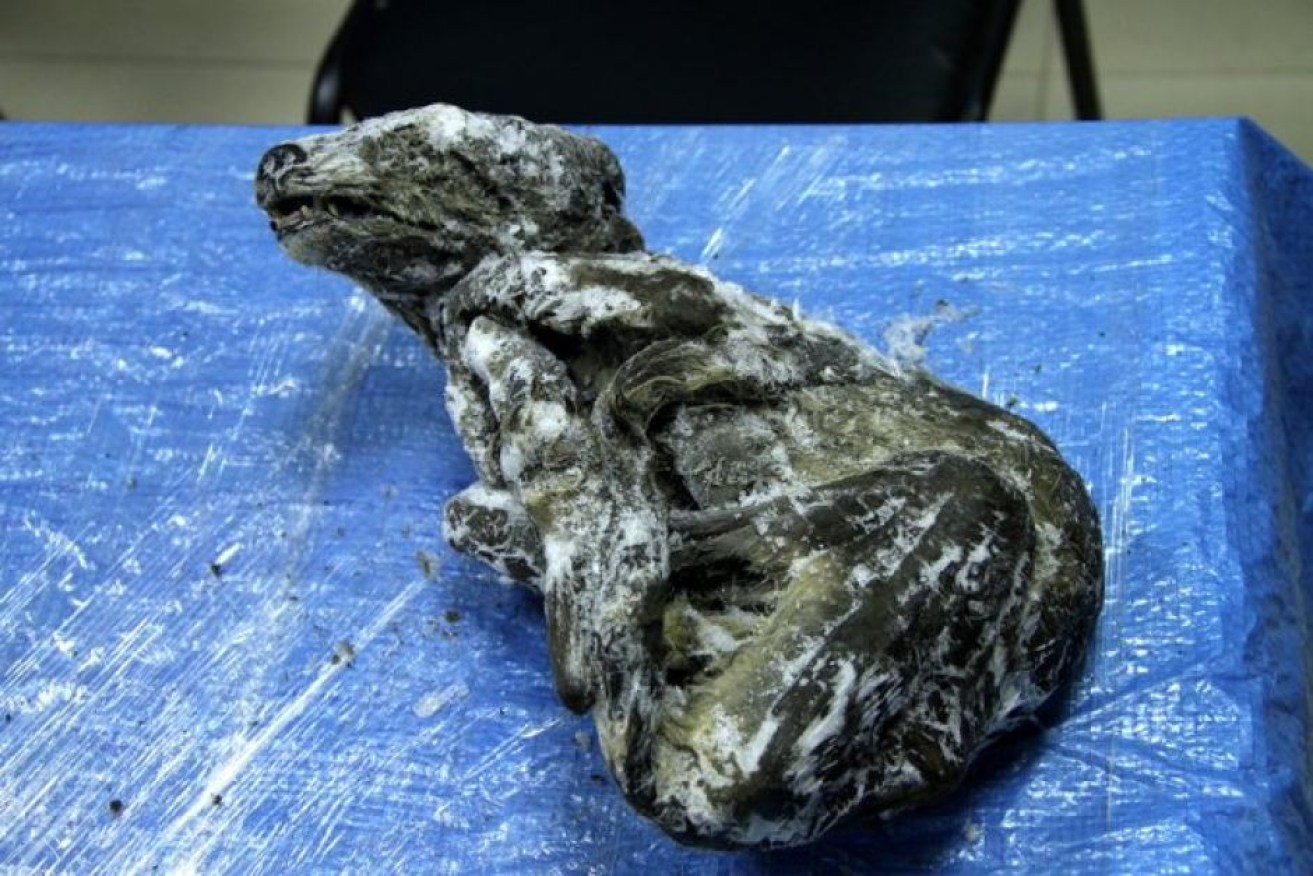Frozen 18,000-year-old pup found in eastern Russia stuns scientists

The well-preserved body was found in a part of Russia known for its paleontological significance. Photo: The Royal Society
Scientists have been left stunned by the discovery of a prehistoric puppy carcass in Russia’s far east, but experts cannot decide on whether it was a dog or a wolf.
Russian scientists found the canine buried in permafrost deposits near Yakutsk, in the far-east of Russian Siberia, an area known for its rich paleontological significance.
It was later sent to the Oxford University’s Radiocarbon Accelerator Unit for dating, which revealed that the corpse was at least 18,000 years old.
The creature would have lived during the Earth’s Pleistocene period – commonly referred to as the last Ice Age.

The pup was discovered in permafrost near Yakutsk, a city in far-eastern Russian Siberia. Photo: ABC News
Despite the passage of almost 20,000 years since the canine died, the body was in remarkable condition, with its fur, teeth and nose almost perfectly preserved.
A further genome analysis confirmed it was male, and it has since been named Dogor, which is a Yakutian word meaning “friend”.
We now have some news on the 18,000 year old #wolf or #dog puppy.
Genome analyses shows it's a male. So we asked our Russian colleagues to name it…
Thus, the name of the puppy is Dogor!
Dogor is a Yakutian word for "friend", which seems very suitable. pic.twitter.com/epIz8mEpVW
— Centre for Palaeogenetics (@CpgSthlm) November 25, 2019
The pup’s discovery posed some ambiguities for the Swedish and Russian researchers tasked with analysing the carcass.
Their findings, published in a scientific journal of Britain’s Royal Society, were included in an article looking at the impact of climate change and human activity on the Arctic fox.
David Stanton, one of the article’s authors and a researcher at the Swedish Centre for Palaeogenetics, told CNN that it was usually “relatively easy to tell the difference” between a wolf and dog carcass.
In Dogor’s case things are a bit more complicated, as Mr Stanton said the specimen’s origins stretched back to a time when, it was thought, some wolf populations were being domesticated into dogs.
At the same time, the end of the Pleistocene – about 11,700 years ago – was “a period of dramatic shifts in habitat availability”, according to the researchers, which resulted in “habitat destruction, competition from invasive species, and climate change”.
“We have a lot of data from it already, and with that amount of data, you’d expect to tell if it was one or the other,” Mr Stanton told CNN.
“The fact that we can’t might suggest that it’s from a population that was ancestral to both – to dogs and wolves.”
Presently, it remains unclear when dogs were exactly domesticated – one study from 2017 suggested that domestication happened between 20,000 and 40,000 years ago, resulting from a divergent European wolf population.
However, there have been other studies that have suggested that domestication happened in various places at once.
One of the oldest dog-like specimens also hails from Russia, with the discovery of ancient skull in 2011 that was dated to around 33,000 years ago.
However, at that time dogs may not have been the human-friendly breed they’re known to be today.
Dogor is destined to go under more tests, and depending on what researchers discover he could become one of the most consequential finds in recent years.
Here is another amazing find from the Belaya Gora site!
Radiocarbon dating says it 18,000 years old.
Question: is it a #wolf cub, or possibly the oldest #dog ever found?
We are hoping to answer this by sequencing it's genome (it has 43% endogenous DNA).
But what do you think? pic.twitter.com/MTZ918GFBf
— Love Dalén (@love_dalen) April 16, 2019
Additional reporting by Alan Weedon
–ABC








